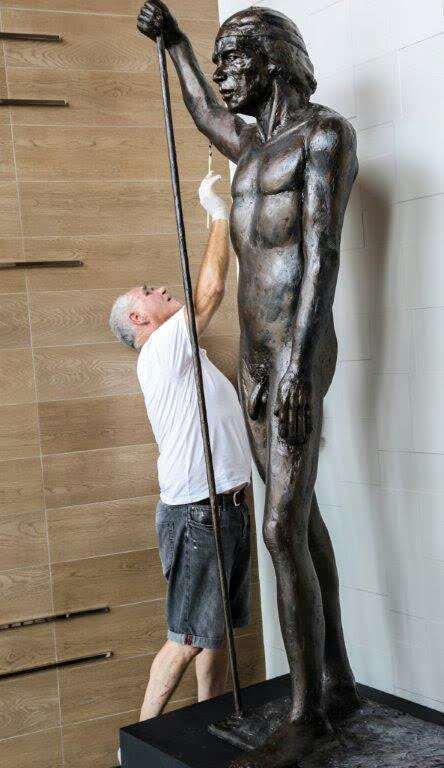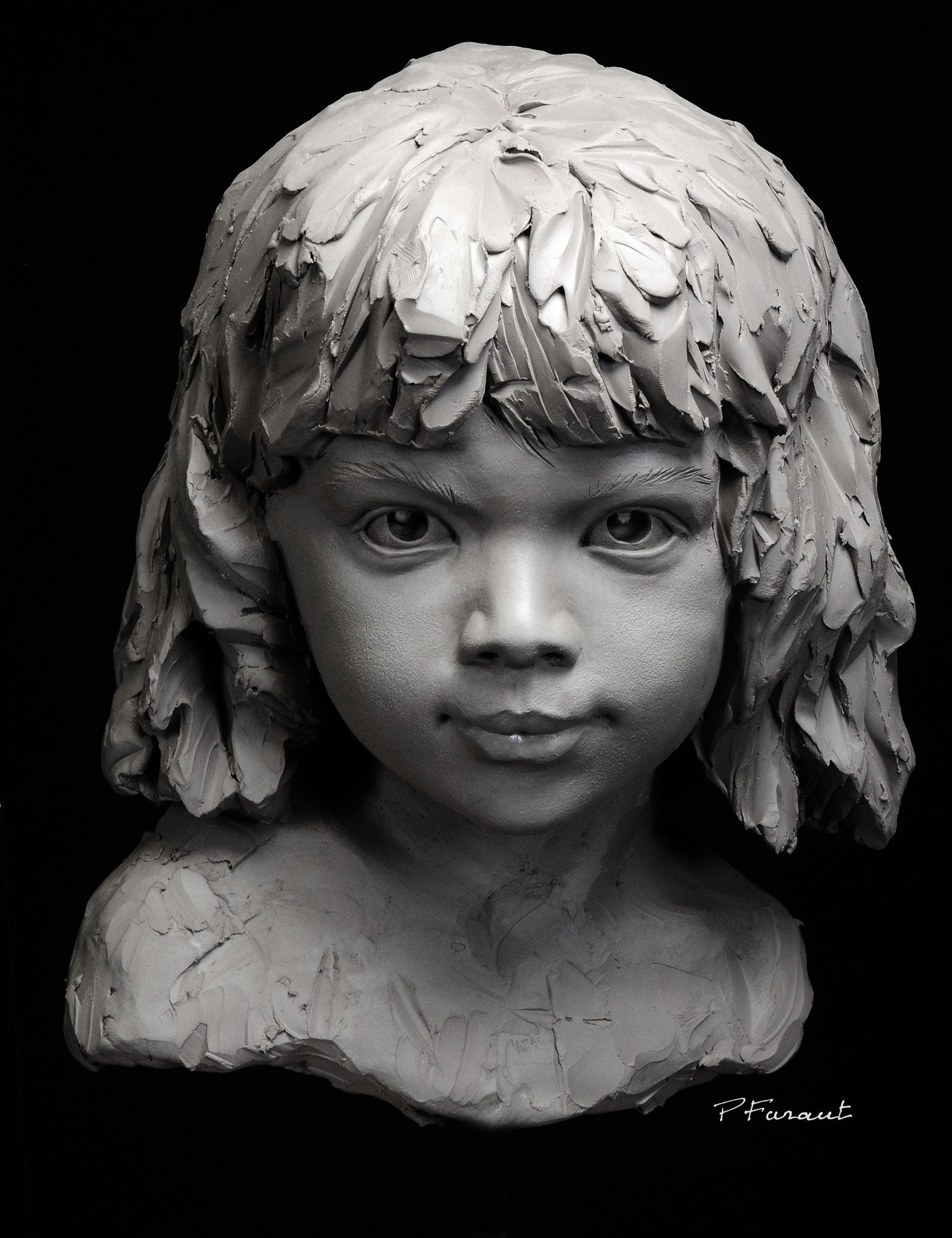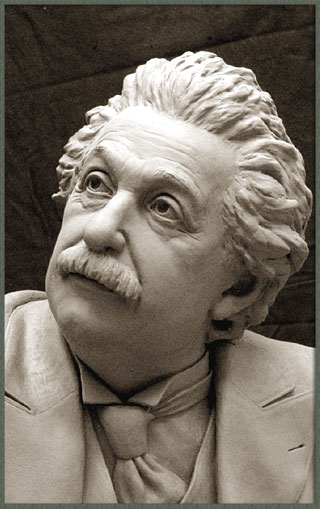The Development of Sculptures: From Ancient to Modern
The Advancement of Sculptures: From Old to Modern. Portrait Sculptor.
Sculpture, among the earliest types of art, has actually been an indispensable component of human civilization for millennia. From the ancient human beings of Egypt and Greece to the modern-day age, sculptures have evolved, mirroring adjustments in creative techniques, products, and social impacts. This trip via time traces the development of sculptures, exploring the changes in vogue, topic, and artistic expression.
Starting with the ancient world, sculptures crafted from stone and later bronze caught the significance of divine beings, rulers, and daily life. The Renaissance duration saw a resurgence of classic sculpting techniques, as musicians sought to imitate the stylish kinds of old Greek and Roman sculptures (Robert C Hitchcock Sculptor). In the contemporary age, musicians challenged typical limits, welcoming abstraction and trial and error with new products
This exploration will certainly explore the diverse advancement of sculptures, disclosing the rich tapestry of creative expression throughout various durations and cultures.

Old Sculptures: From Rock to Bronze
Old sculptures transitioned from being sculpted out of rock to being cast in bronze. This shift marked a considerable development in the art of sculpture, permitting higher improvement and detail in the ended up works. Stone sculptures, while impressive in their own right, were limited by the nature of the product. Stone required substantial carving and forming, typically resulting in a more streamlined representation of the subject.
The intro of bronze as a tool for sculptures caused a change in creative expression. Bronze used artists the possibility to create intricate and natural types that were not possible with stone. The procedure of casting bronze allowed for the development of multiple duplicates of a sculpture, making it possible for broader circulation and conservation of these imaginative work of arts.
The change from stone to bronze likewise saw a shift in the topic of sculptures. While rock sculptures mainly illustrated gods, goddesses, and mythological figures, bronze sculptures began to reflect a wider variety of subjects, consisting of daily people and pets. This development of topic showcased the convenience and flexibility of the bronze tool.
Renaissance Rebirth: Forming in the Classical Design
The Renaissance revival of sculpture experienced a rebirth in the classical style, building upon the developments made during the shift from stone to bronze in old sculptures. Throughout this duration, musicians sought to recreate the classic aesthetic and ideals of elegance that prevailed in old Greek and Roman sculptures.
Among the key features of the Renaissance revival was the emphasis on naturalism and the human kind. Sculptors like Donatello and Michelangelo strove to catch the anatomical information and expressions of their topics with unmatched accuracy. They studied the body and incorporated their observations into their sculptures, leading to natural and practical depictions.
One more important facet of the Renaissance rebirth was the expedition of perspective and deepness. Artists made use of methods such as contrapposto, where the weight of the body is shifted to one side, creating a sense of activity and dynamism. They additionally trying out different products, consisting of marble and bronze, to attain a degree of refinement and complexity in their sculptures.

Innovation and the Avant-Garde: Breaking Conventional Borders
Throughout the Innovation and Avant-Garde activities, artists pressed the borders of conventional imaginative conventions. This period, which emerged in the late 19th and very early 20th centuries, saw a remarkable change in the way musicians approached sculpture. Denying the concept of art as mere replica, modernist sculptors looked for to check out new forms, materials, and ideas.
Among the key characteristics of modernist sculpture was the focus on abstraction. Artists relocated away from sensible depictions and rather concentrated on recording the essence More Help of the topic via streamlined kinds and geometric shapes. This departure from conventional depiction enabled musicians to share their emotions and ideas in an extra subjective and personal way.

Contemporary Sculptures: Exploring New Products and Concepts
With a concentrate on exploring new materials and principles, contemporary sculptures have actually reinvented the area of art. Artists today are pushing the limits of standard sculpture by utilizing cutting-edge products and trying out with abstract concepts. These sculptures challenge standard ideas of materiality, form, and definition, inviting audiences to participate in a provocative and brand-new imaginative experience.
Contemporary sculptors are welcoming a variety of materials, consisting of plastic, glass, metal, and also natural issue. They are not restricted to the traditional medium of stone or clay, enabling for greater liberty of expression and experimentation. This change towards non-traditional products has actually opened up new possibilities for musicians to create sculptures that are dynamic, interactive, and visually striking.
In addition to exploring brand-new products, contemporary sculptures also explore facility and abstract principles. Musicians are currently discovering themes such as identity, social problems, and the atmosphere, utilizing sculpture as an effective tool for social discourse and introspection. These sculptures test viewers to assume critically and engage with art on a deeper degree, stimulating conversations and prompting psychological actions.
Worldwide Impacts: Sculptural Practices From Around The Globe
Sculptural practices from various areas of the globe have actually considerably shaped the advancement of sculptures throughout history. The international influences on sculpture have actually been diverse and have added to the splendor and variety of artistic expressions. From the ancient human beings of Egypt, Greece, and Rome to the elaborate carvings of Eastern societies, each region has actually established its unique sculptural customs that have actually influenced musicians across time.
In ancient Egypt, sculptures were created mostly for religious and funerary purposes. The renowned sculptures of pharaohs and gods, such as the Great Sphinx and the bust of Queen Nefertiti, showcase the Egyptians' mastery of rock carving and their belief in the immortality.

In old Rome, sculpture offered both political and artistic purposes. Roman sculptures often depicted emperors, generals, and mythical figures, showing the power and splendour of the empire. The marble statue of Augustus of Prima Porta and the huge Arch of Constantine are notable examples of Roman sculptural success.
Oriental sculptural customs, especially in India, China, and Japan, have likewise had an extensive influence on the evolution of sculptures. Indian sculptures, such as the intricately carved holy places of Khajuraho and the colossal statues of Buddha, show an abundant blend of religious, mythical, and architectural aspects. Chinese sculptures, defined by their fine craftsmanship and focus to detail, typically depict deities, animals, and epic numbers. Japanese sculptures, affected by Buddhism, emphasize simplicity and tranquility, seen in the tranquil statues of Buddha and the elegant art of bonsai.
The global influences on sculpture remain to advance in the modern era. Musicians today attract inspiration from different sculptural practices, integrating brand-new products, methods, and principles to develop thought-provoking and ingenious art work. The fusion of various social influences has given surge to a dynamic and varied sculptural landscape, mirroring the interconnectedness of our international society. As we want to the future, it is specific that the worldwide impacts on sculpture will proceed to shape and redefine this old art kind.
Conclusion
In final thought, the evolution of sculptures has seen a change from old rock and bronze functions to the classical revival during the Renaissance. Today, modern sculptures discover new products and principles, while likewise attracting motivation from worldwide sculptural practices.
From the ancient worlds of Egypt and Greece to the modern-day era, sculptures have actually evolved, mirroring adjustments in artistic strategies, materials, and cultural influences.Beginning with the old globe, sculptures crafted from stone and later on bronze caught the essence of divine beings, rulers, and daily life.Old sculptures transitioned from being sculpted out of rock to being cast in bronze. While stone sculptures predominantly shown gods, goddesses, and mythological numbers, bronze sculptures began to show a broader array of subjects, including day-to-day individuals and pets.In verdict, the evolution of sculptures has actually seen a change from old stone and bronze functions to the classical revival throughout the Renaissance.